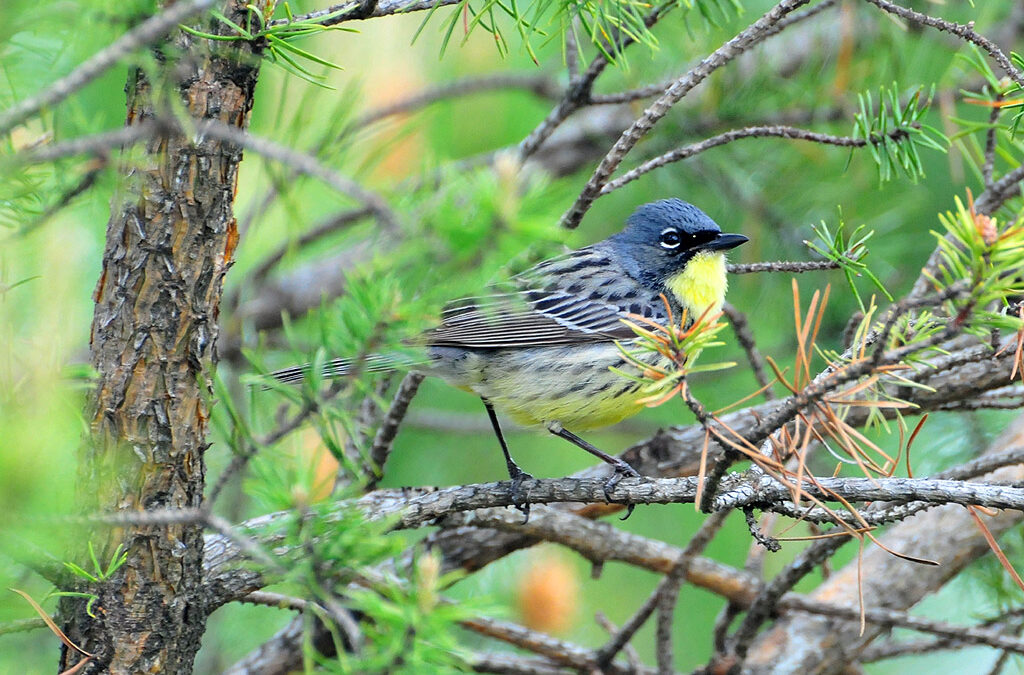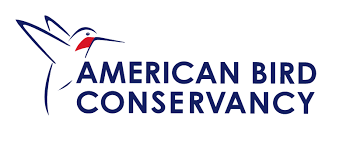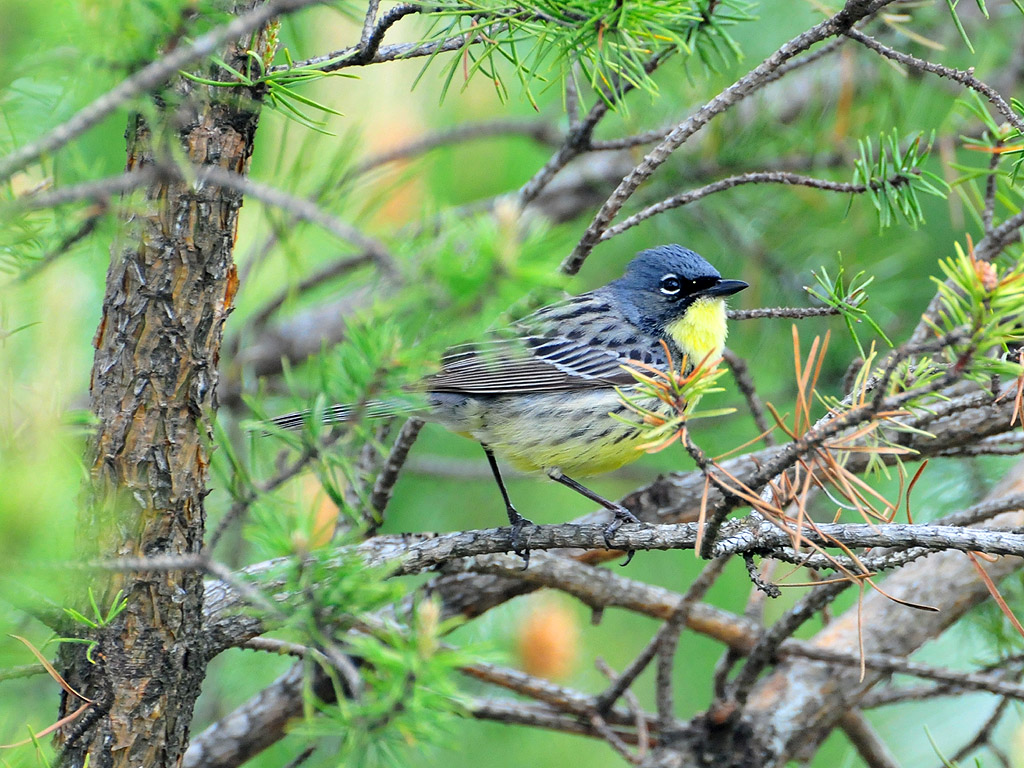
The American Bird Conservancy Kirtland’s Warbler Fund is one of more than 100 funds held in the Foundation’s Wisconsin Conservation Endowment, a portfolio of permanent endowments that provide ongoing, sustainable support for conservation needs in Wisconsin. Photo by Joel Trick/USFWS
New fund provides permanent support for rare Wisconsin songbird
Thanks to the efforts of numerous conservation partners and individuals, there is now permanent funding to support Kirtland’s warbler conservation efforts in Wisconsin!
The American Bird Conservancy Kirtland’s Warbler Fund, held by the Natural Resources Foundation of Wisconsin (NRF), was established in April 2021 in the Wisconsin Conservation Endowment to provide a sustainable funding source for conservation efforts for the state-endangered Kirtland’s warbler in Wisconsin.
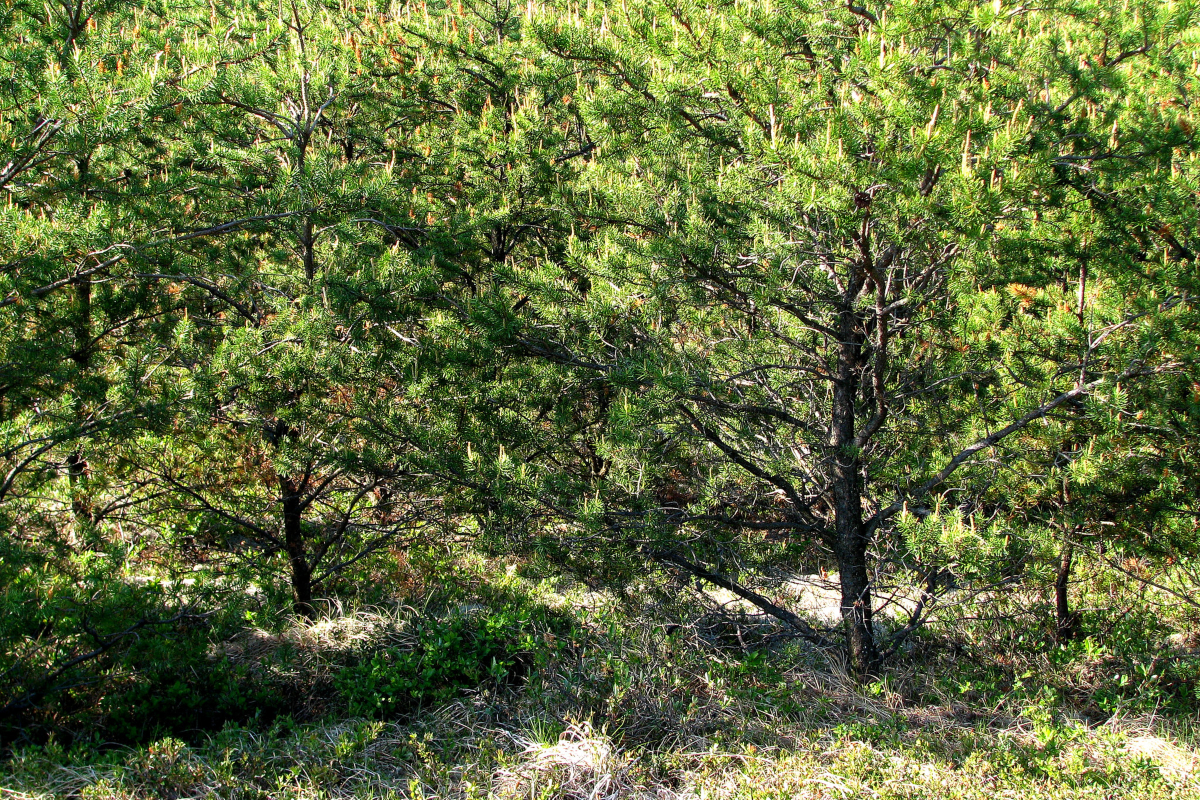
Kirtland’s warblers prefer young jack pines for their nesting habitat, but the trees must be “just right” – not too big or too small. Photo by Audrey Hoff
Why Kirtland’s warblers struggle for survival
Kirtland’s warblers are one of the most geographically restricted birds in the United States. They are found exclusively in the Great Lakes pine forests of North America, including the Upper Peninsula of Michigan, Wisconsin, and Ontario, Canada. They rely on an incredibly specific type of habitat that was usually created through natural methods like wildfires, but today requires human management to create the required conditions.
Kirtland’s warblers have a “Goldilocks approach” to choosing their nesting habitat, needing it to be just right. They prefer young jack pine forests of a certain age class and size, nesting in jack pine stands of at least 80 acres, but preferring stands of 300-400 acres in size, and larger. The young pine forest must be 5-23 years of age, or 1.5-5 meters in height, with adequate low growth and vegetation. As ground nesting birds, they are at extra risk to predation and nest parasitism.
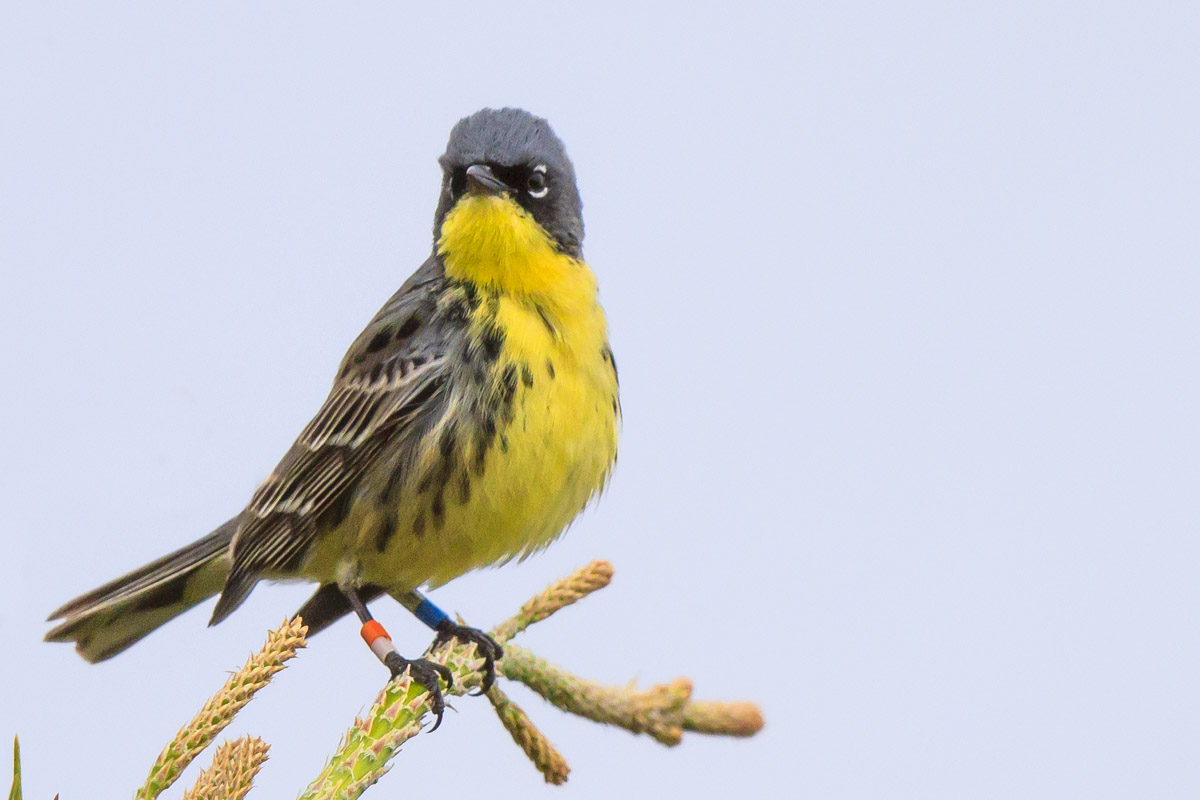
This banded male Kirtland’s warbler was photographed on one of the Foundation’s Kirtland’s Warbler Field Trips, led by conservation biologists that give a behind-the-scenes look at the recovery effort of this rare songbird. Photo by Bruce Bartel
Pulled back from the brink of extinction
The Kirtland’s warbler was delisted from the federal Endangered Species Act (ESA) in 2019. But, thanks to substantial conservation efforts by public and private partners, the overall Kirtland’s warbler population is now estimated to be over 2,300 pairs – more than twice the recovery goal set under the ESA. However, most of the population is found in the Lower Peninsula of Michigan.
As of 2021, a minimum of 39 singing males have been documented in Wisconsin. Although the species is slowly responding to conservation efforts as shown by the growth of the population and expansion of its range, the Kirtland’s remains listed as state endangered in Wisconsin.
The American Bird Conservancy has established a permanent endowment fund through the Foundation to support the conservation of the Kirtland’s warbler.
Permanent funding for a permanent solution
Because of these specific habitat requirements and threats that require ongoing conservation efforts, the Kirtland’s warbler is considered a conservation-reliant species, meaning they will always need human intervention to ensure their survival as a result of a human created situation.
And now that the species has been delisted from the ESA, there has been a loss of federal funding for conservation efforts, meaning that financial support from state agencies and the private sector is critical to the continued recovery of the population. Funding is used for critical conservation activities such as creating and maintaining nesting habitat, removing nest parasites, and monitoring the population.
To address this ongoing funding need, the American Bird Conservancy, an international nonprofit dedicated to conserving wild birds and their habitat throughout the Americas, established a permanent endowment fund through the Foundation making sure the long-term conservation goals for the Kirtland’s warbler population in Wisconsin are met forever.
Similar endowment funds have been created by the Michigan Department of Natural Resources and the Kirtland’s Warbler Alliance, focused on other geographic areas with Kirtland’s populations, including their primary breeding habitat in Michigan, and their overwintering habitat in the Bahamas.
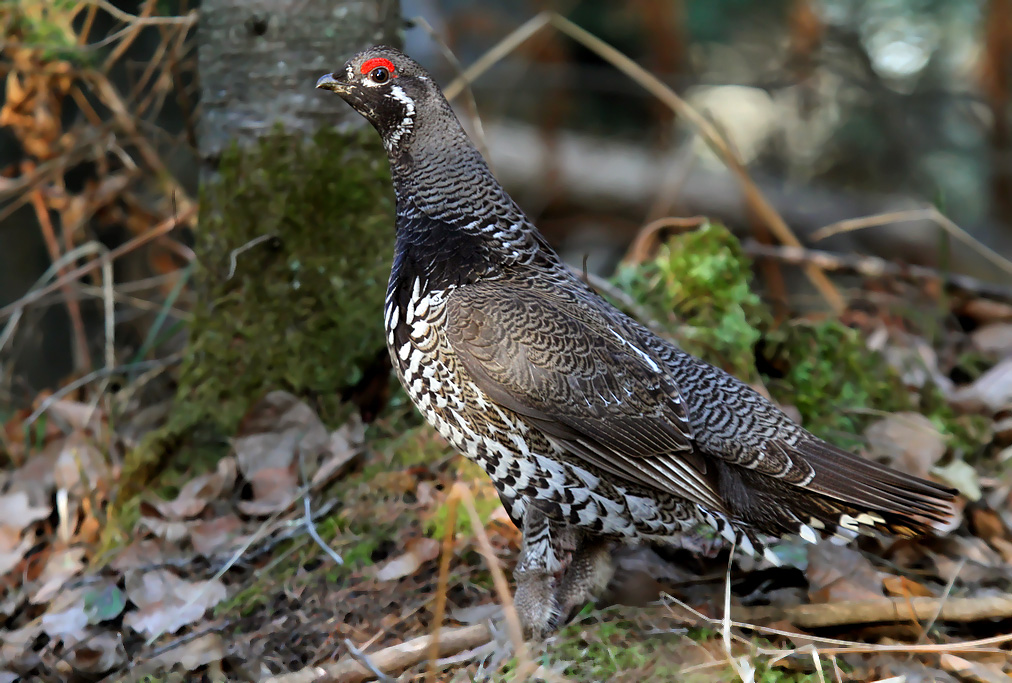
Kirtland’s aren’t the only birds that will benefit from the conservation efforts this fund supports. Many other species associated with pine barrens—like the spruce grouse pictured here, a state Threatened species—will also benefit. Photo by Ryan Brady
Barrens and birds – a conservation ripple effect
The Kirtland’s Warbler Fund was launched by a 2019 grant from the Foundation’s Bird Protection Fund, and additional donations were made by numerous individuals in Wisconsin who care about the Kirtland’s Warbler. The Fund was established with $20,000, with long-term goals for growth.
Pine barrens (the preferred habitat of the Kirtland’s warbler) are considered a globally-imperiled natural community, with only 1% remaining in the world. By taking steps to preserve this rare Wisconsin songbird, pine barrens will also be preserved, along with the unique plants and wildlife that can be found there.
In addition to providing critical funding to sustain Wisconsin’s Kirtland’s population, these conservation efforts will also support other bird species that are associated with pine barrens habitat, such as sharp-tailed and spruce grouse, upland sandpiper, golden-winged warblers, and vesper, lark, and grasshopper sparrows. Other rare wildlife will also benefit, such as Karner blue butterflies, prairie skinks, and slender glass lizards.
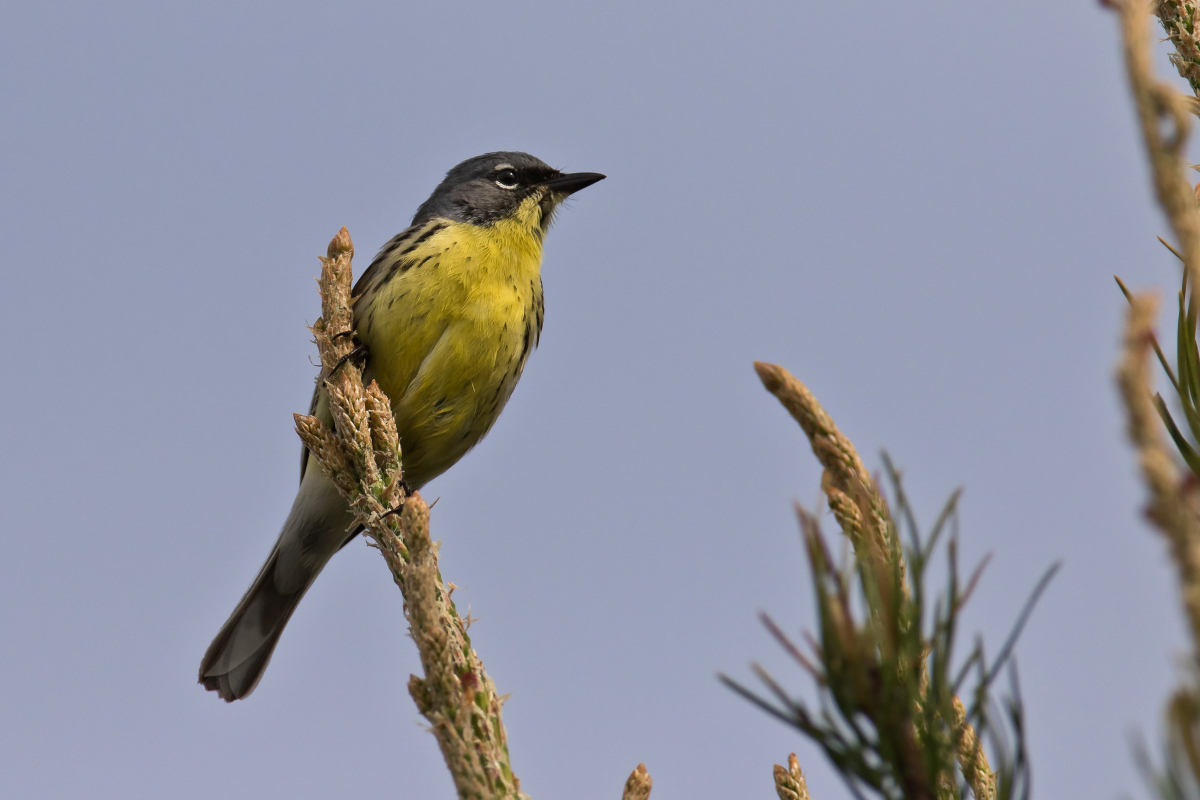
Kirtland’s warblers have been documented in pine barrens habitat in six Wisconsin counties. Photo by Robert Rolley
Supporting Kirtland’s warblers for over a decade
The Natural Resources Foundation of Wisconsin has supported recovery efforts for the Kirtland’s warbler in Wisconsin since the species was first documented in Adams County in 2007.
Through our Bird Protection Fund, our members and supporters have invested nearly $200,000 in on-the-ground conservation efforts for the Kirtland’s warbler, including funding for nest monitoring, and other critical research and habitat management activities to aid in the expansion of the range and population size of the Kirtland’s warbler in Wisconsin.
During the most recent census, Kirtland’s warblers were documented in pine barrens habitat in Adams, Bayfield, Douglas, Jackson, Marinette, and Vilas County. In 2020, three singing males and one female found in Jackson County were the first confirmed birds in that county in well over a decade.
Additionally, the Foundation annually leads guided tours to see the Kirtland’s warbler through its Field Trip Program, which is one of the best opportunities to view a Kirtland’s warbler in the wild.
Thanks to the hard work of dedicated conservation partners, Wisconsin now has a growing population of Kirtland’s warblers. And thanks to the American Bird Conservancy, the Natural Resources Foundation of Wisconsin, the Wisconsin Department of Natural Resources, the U.S. Fish & Wildlife Service, and the numerous other conservation partners, private landowners, and Foundation members like you, the Kirtland’s warbler is here to stay.
Written by Caitlin Williamson, Director of Conservation Programs
Want to support the Kirtland’s warbler? Make a gift to grow the American Bird Conservancy Kirtland’s Warbler Fund! You can help grow the impact of this new Fund by making a donation at this link.
